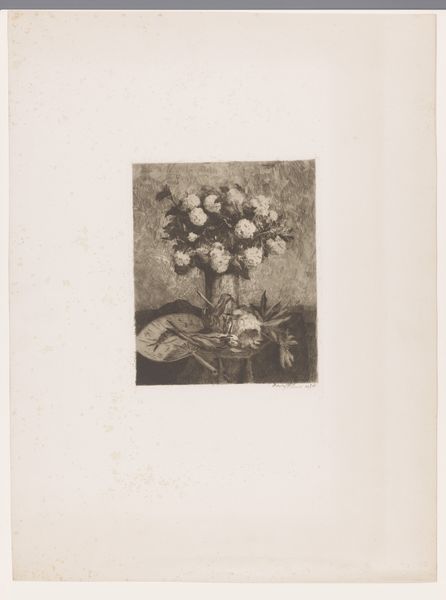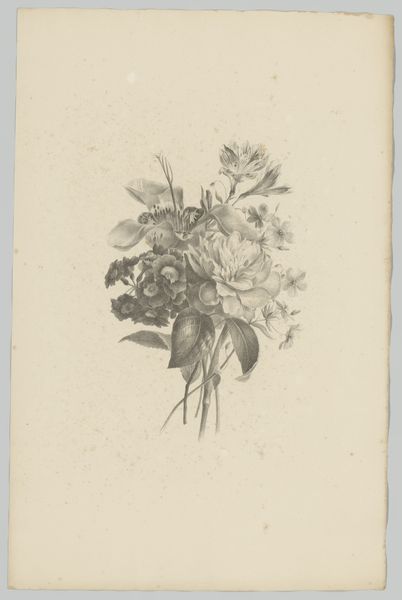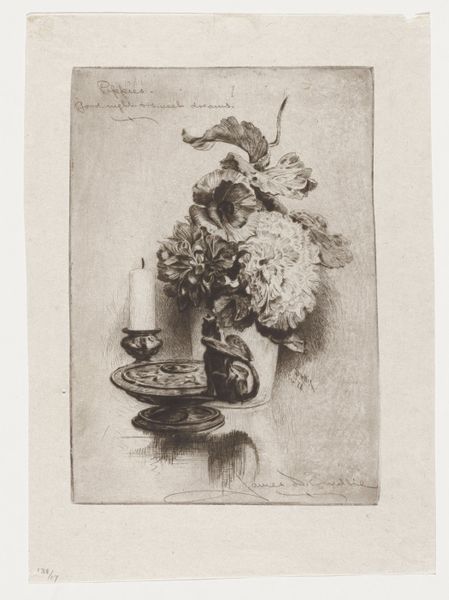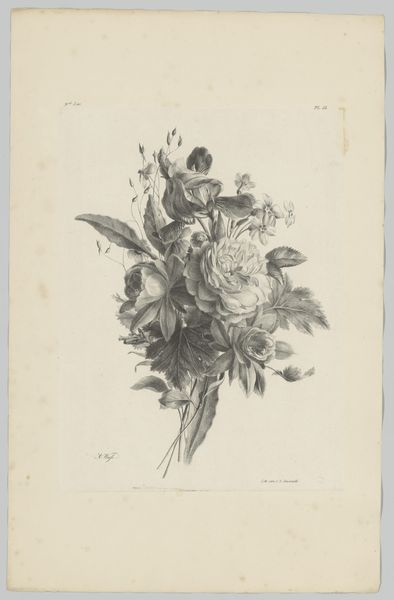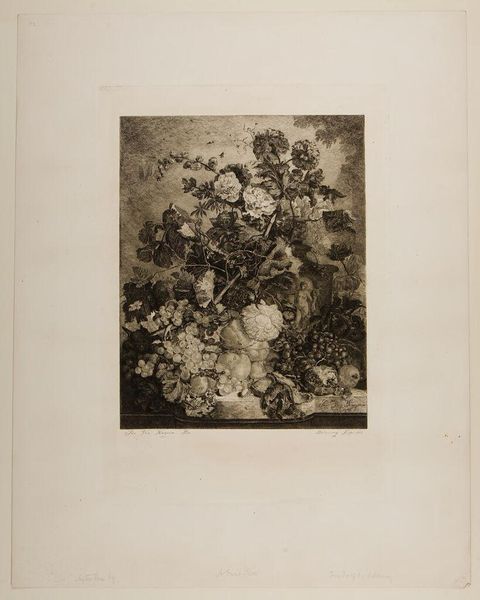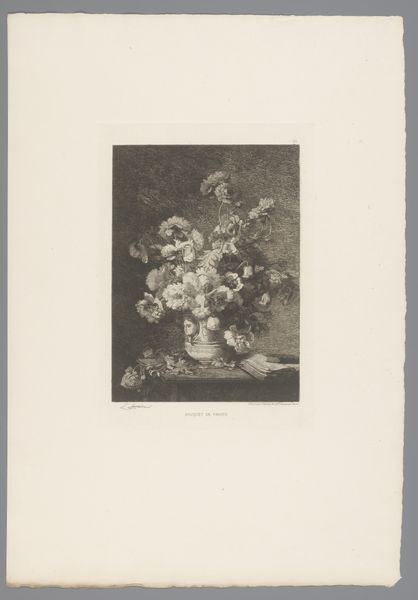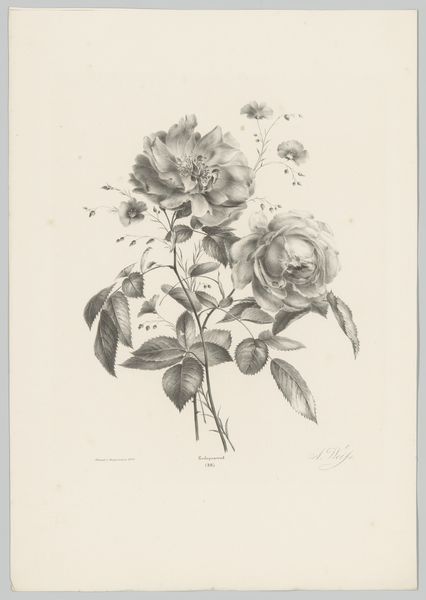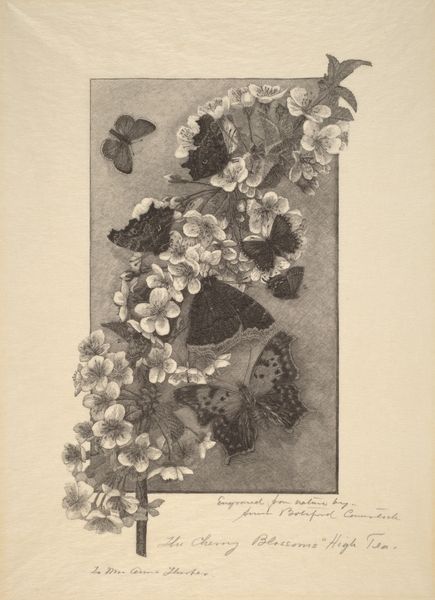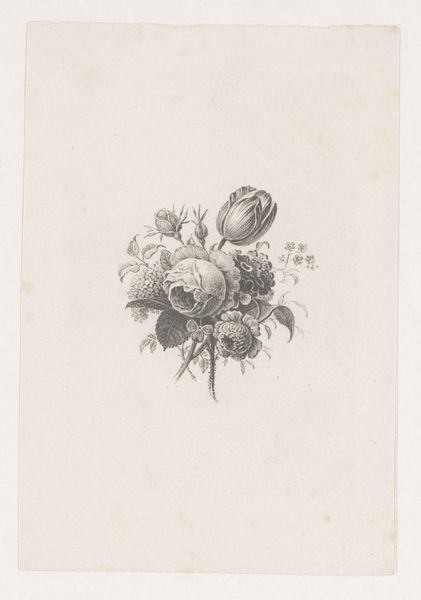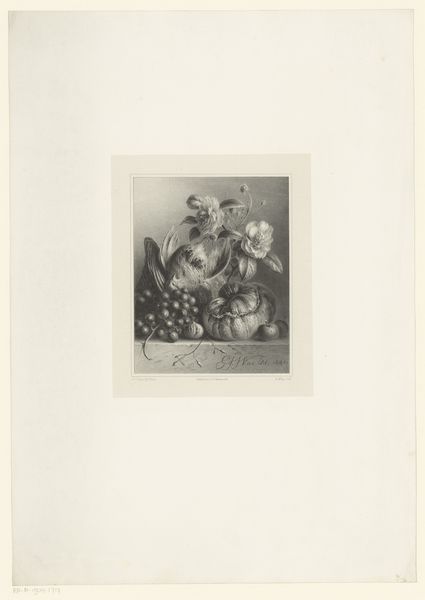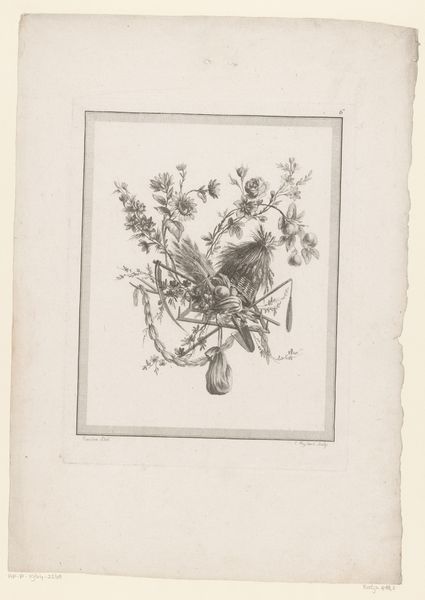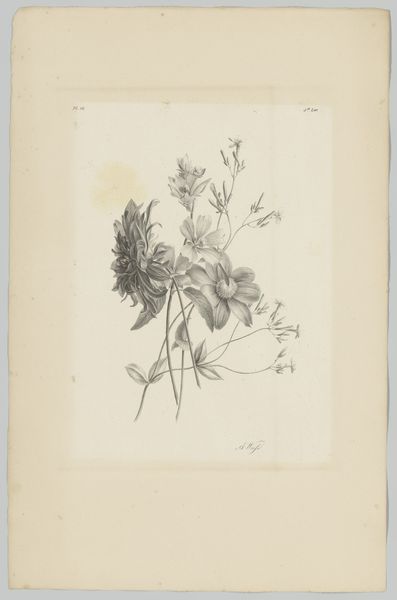
print, etching, paper, ink
# print
#
etching
#
old engraving style
#
paper
#
ink
#
fruit
#
pen-ink sketch
#
symbolism
Dimensions: height 238 mm, width 157 mm
Copyright: Rijks Museum: Open Domain
Curator: This etching from 1883, entitled "Bloemstilleven," which translates to "Floral Still Life," is by Jules Guiette. Done in ink on paper, it feels rather delicate and ephemeral to me. What are your first impressions? Editor: It’s like looking at a memory, isn't it? Faded around the edges, a bit ghostly. You know, like a bouquet you find pressed between the pages of an old book. There’s a distinct air of melancholy about it. Curator: It's true. There's a stillness here, despite the abundance of blooms. Look at the detail in the rendering, though; it reminds me a bit of botanical illustrations, scientific but still infused with emotion. Given that Guiette flirted with Symbolism, could this choice of detail hint at mortality? Are they perhaps symbols of fleeting beauty? Editor: Possibly. Etchings inherently feel like records—transcriptions of something that existed. And that fits perfectly with the Symbolist idea of capturing inner realities. It also speaks to ideas around memento mori, and reminders that things come to pass... flowers have a very specific moment of flourishing. The use of monochrome lends that faded air that makes the scene read as lost to time... Curator: It's the technique that is grabbing me too; this really old engraving style…almost deliberately archaic, reaching for something…historical, maybe? Does that impact the symbols themselves? Editor: I think it absolutely amplifies the sense of a past world, you are so right, creating a sort of symbolic layering. By adopting a style that consciously recalls older eras, Guiette isn't just depicting flowers; they become loaded signifiers of the passage of time, loss, remembrance, even perhaps a longing for something lost, or simply unreachable. Curator: It’s funny, isn't it? Something that feels simultaneously transient and enduring. Like those fleeting moments of intense joy, caught and preserved. Editor: Or sorrow transformed into a kind of beautiful artifact. I guess that’s why the memory aspect resonates with me so deeply, then. Because we’re looking at something that has echoes of its own making, of how symbols can shift, morph over time. Thanks, now I am going to be thinking about those pressed flowers for a long time…
Comments
No comments
Be the first to comment and join the conversation on the ultimate creative platform.
